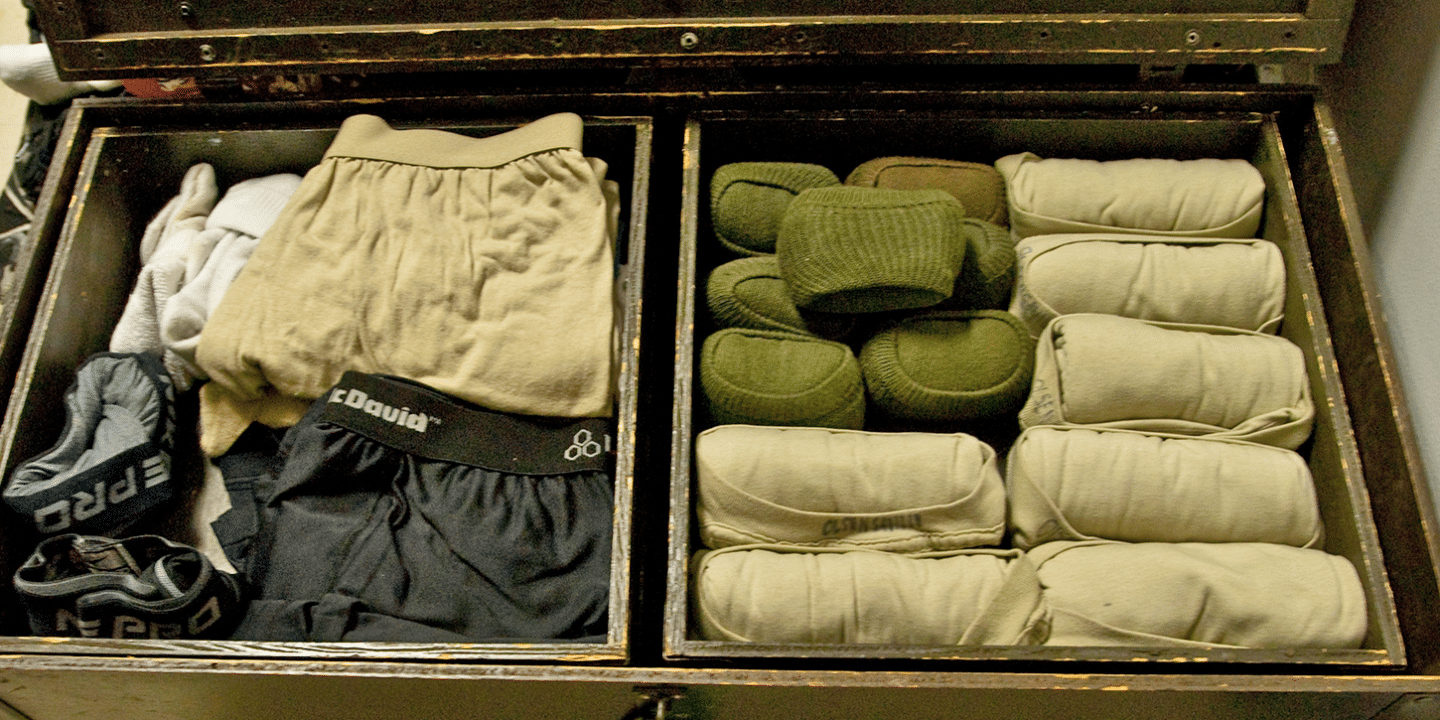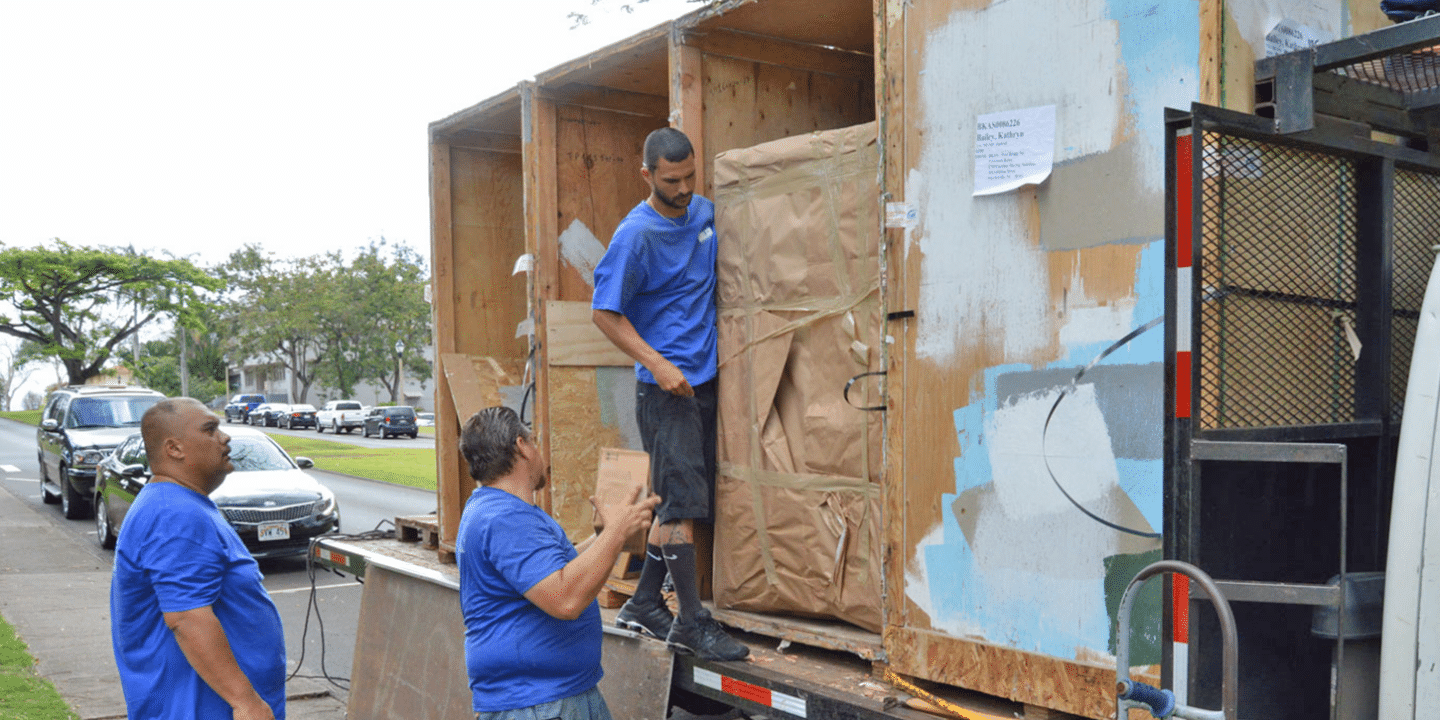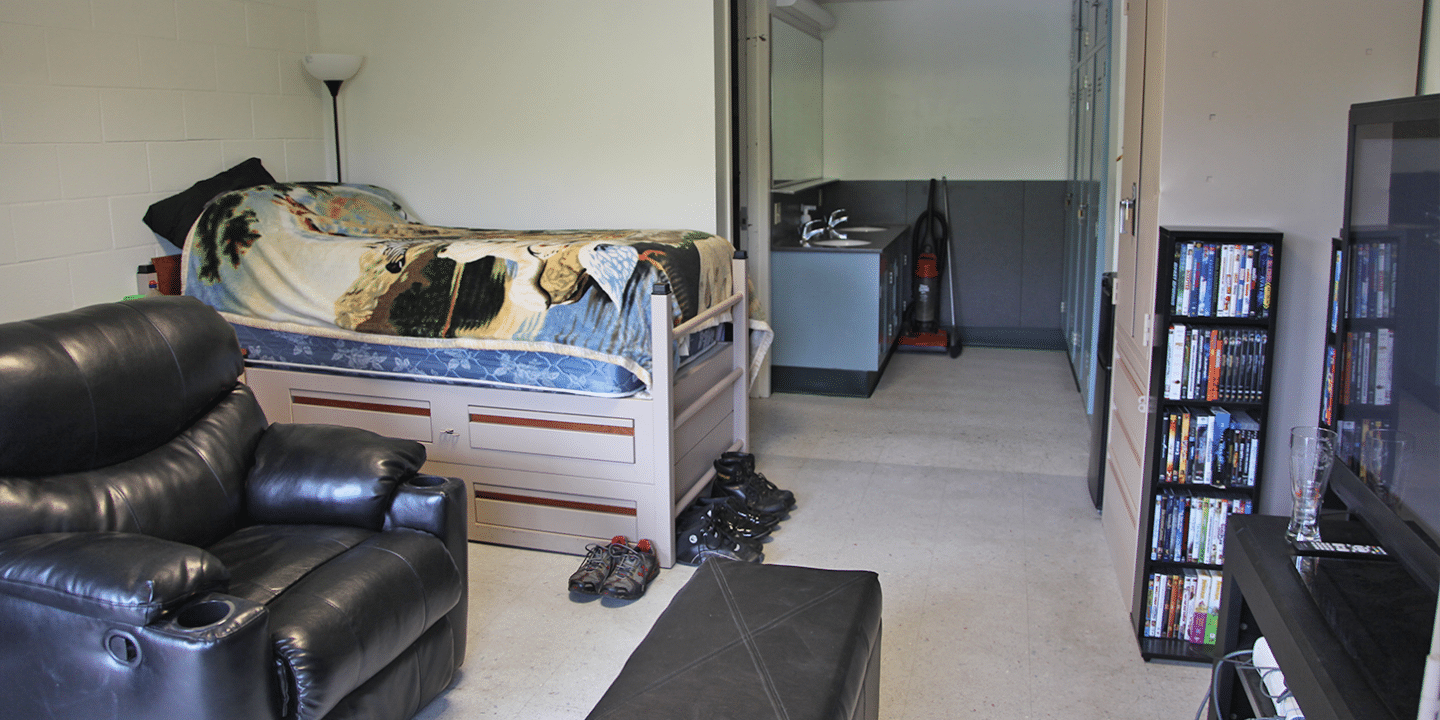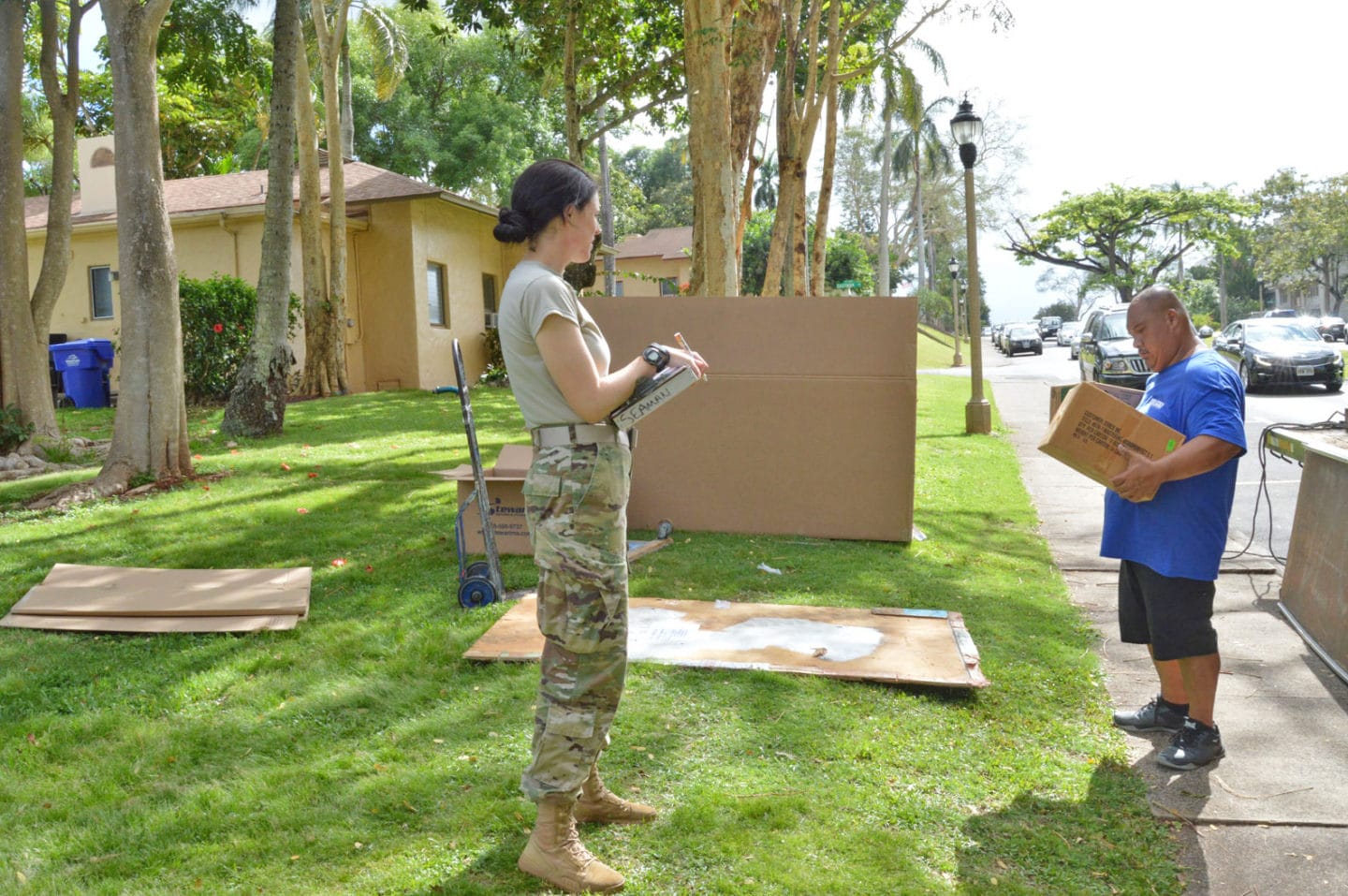First PCS moves don’t have to be hard.
In fact, it should be an exciting time in your career. You’re about to head to your very first duty station post boot camp. It’s time to get pumped about the fact that your military career is finally beginning.
Since this is your first PCS move, you’re perhaps unsure of what to expect and how to prepare.
No worries, we’ve got you covered.
Read on to learn how to best organize yourself before, during, and after the move.
What Types of Military Moves Are There?
When you’re first coming out of basic training, you may make a temporary or permanent change of station. It depends on what additional training you may need and where manning is needed the most.
There are two types of military moves:
Temporary Duty (TDY) is when you are temporarily assigned to a new location. The period of time is usually over 31 days, but generally less than 20 weeks. If you’re married and have dependents, they may not be able to move with you. You may be eligible to move a small amount of your belongings with you for a TDY.
Permanent Change of Station (PCS) is a more intensive process and move period. You’ll receive orders for a PCS when you’re going to a location for more than 20 weeks, even if it’s not related to your training or job. When you get PCS orders, you’re allowed a full household move, if needed.
Your First PCS Move
When you’re getting ready to do the big move AKA the often dreaded PCS move, being organized and prepared as much as possible is helpful.
If you’ve never made a big location move, it can be a bit of a shock as to how much planning is involved. When it comes to doing it the military’s way, it’s a bit of a process.
Here we break down how to prepare before, during, and after you PCS to your first duty station:
Preparing for Your PCS Move in Advance

There’s no point in planning before you get orders in hand. But once you do, planning moves fast.
If you want movers to take over packing for you, get your calendar ready. Household transportation companies book military service members’ shipments months in advance. Getting yourself ready for your move as efficiently as possible will make it go smoother. A few tips:
- Get started ASAP – Once you have orders, start looking at the paperwork you need to fill out to do what’s called a household goods move.
- Check out your moving options – You can move everything yourself, have a professional company move it partially or fully, or even send a small amount of belongings ahead. Decide what works best for you.
- Talk to the local personal property office – If you’re completely confused as to how to get started, chat with the personal property office at your current base or your future base.
Pro moving tip: Moving briefs are actually helpful. If possible, attend a moving brief to get all the details of what paperwork to fill out, move options, when you’ll receive your belongings, and more.
Schedule Your Big Move
As you start scheduling and planning your move, you’ll be using a lot of different government websites. When in doubt about where to start, always stop by your local personal property office to understand the process better. Each move is specific to the individual service member.
When setting up your move, consider:
- Where are you moving to? Start thinking ahead to if you’ll need to ship your car if you have more than one. Consider if you’d prefer to fly or drive to your new destination.
- Make Mov.mil your best friend – Use Mov.mil to do everything from learning about moving entitlements to contacting customer service about move issues.
- Joint moves require double the effort – If you’re doing a dual military move with your active duty spouse, stop by your local personal property office first.
- Look at car shipping logistics – Shipping a car? Visit PCSmyPOV to learn how to do so. Service members can ship one car within the U.S. (OCONUS) per move.
Pro moving tip: Summer months are the busiest months for PCS moves. Don’t wait to schedule walk-throughs or other important moving meetings, briefs, etc. until the last minute. Put it on your calendar as soon as you can after getting orders.
Prep for Moving Day

Moving is stressful, but getting organized in advance and knowing what to expect makes it easier. Start with a thorough inventory of your items. Know exactly what you have by creating your own inventory. This can minimize issues you might face if you need to later make a loss or damage claim. In the weeks leading up to moving day, it’s a great idea to also purge your household of broken items, excessive items, and items you just don’t use anymore.
A few prepping tips:
- Get organized – Condense items. Shoe boxes with odds and ends can go into larger totes, for example. The military movers may still unpack and repack these, but most of the time they leave it alone.
- Throw out junk – Broken items should go in the trash.
- Create a donate pile – Toss or donate items that no longer serve your lifestyle.
- Be specific in listing your items – If you plan to do any sort of inventory yourself, be very specific. Include serial numbers and the number of items and a good description of what it is. Date- stamped photos are always a great idea.
- Create a high-value inventory list – Shoot photos and videos of high-value items separately from your other items. Write down the value of these items and keep it in a safe place with you while you travel, along with the digital photos or video.
- Remove wall items – Anything that’s mounted to a wall that needs to go should be taken down before the movers arrive. Make sure everything is unplugged, too.
- Select what items go with you – If you’re driving a car to your destination, do a trial pack a few days before the movers arrive to make sure every single item will fit in your car. Save car space for high-value and sentimental items that you could never replace otherwise.
Pro moving tip: Take top-quality photos and video of EVERYTHING. You won’t be able to remember every item you own on the other side of your move. Add a date stamp to these images.
Move Day

If you are adequately prepared, move day should go pretty smoothly. But that being said, it can still be stressful having strangers touching your stuff. Don’t plan to do anything else that day other than direct and guide numbers to what needs to be packed.
Essential tips you’ll want to remember for move day:
- Keep kids and pets out of it – If you have kids, get a babysitter. Pets should be locked up or in another location to minimize the stress they likely already feel about moving.
- Make sure EVERYTHING is ready to go – Scrub those pans and dry dishes. Otherwise even dirty dishes will make it into your moving boxes.
- Toss the gross stuff – Old mops, brooms, well-used trash cans should go into the garbage bin. If it’s out in your house, the movers assume it goes to the new location. Sometimes movers aren’t thoughtful with packing, and grimy household items get mingled in with your nice items. Remove these undesirable items prior to the moving company’s arrival.
- Block off a room – If you have items that don’t need to be shipped, create an entire room or separate area that’s blocked off that won’t be packed. Add a sign and make sure you let the movers know not to touch it.
- Color code each room – Use colorful dots on boxes for each room. This will be helpful when you are on the other end of your move and need to tell movers where to put items. Red dots can signify kitchen items, blue is for bedroom, etc. Just make sure you save a “key” with what each color means.
- Have water on hand – Moving is hard work. Stay hydrated. If you want, grab an extra case for your movers, too.
- Keep cash on you for tips – It doesn’t always guarantee your movers won’t break your items, but it doesn’t hurt to try.
- Do a final walk-through of your place – Check every closet, open every cabinet, and take a look in your attic or basement as well. If you leave it behind, you probably won’t see it again.
Pro moving tip: Get copies of your inventory form. Take a good long look at your inventory form. Make sure everything is listed and before the movers go, be sure it’s signed and get a copy of it.
What the Movers Won’t Ship:

- Pets
- Live plants
- Privately-owned live ammunition
- Liquids (cleaning supplies, food, etc.)
Moving reminder: At the end of your very long and exhausting move day, you’ll be asked to sign an inventory form. Make sure specific items that are of importance to you are itemized. “Electronics” doesn’t fly if you have three flat screen TVs that are expensive. Make sure you document specific high-value items — cameras, electronics, clothing, purses, etc. on the form.
Settle into Your New Place
Once you’re in your new destination, it can be overwhelming to direct movers where to drop boxes and put items, especially after a long trip. Take your time and don’t let them pressure or rush you.
Then, once the moving dust has settled, take the time to go through each box to assess if everything you own made it in one piece.
- Start with one box at a time – Unpack the essentials only. Bedsheets, toiletries, kitchenware, etc. Unpack each box and note anything broken and take photos as you go, too.
- Check for broken items ASAP – As soon as you can, start documenting what’s broken. Take pictures and save every broken piece. It’s annoying to save broken items, but it’s the only way to guarantee you have a fair shot of being compensated for the item.
- Submit your damage and loss claim – Don’t submit this before you have gone through every single box and checked every item for damage. You’re entitled to the full replacement value of that item as long as you submit your claim within nine months of your move date. Call claims customer service with any questions!
Pro moving tip: If big pieces of furniture and other items come in obviously broken, get it on the moving inventory form immediately. You will have time to go through boxes later, but having an extra set of eyes witness your broken items arriving is helpful in the final claims process.
Life Gets Easier After Your First PCS Move

Whether you’re starting to plan your PCS to first duty station or just finishing it, know it does get easier. With every move you become more knowledgeable about the process.
Take on every new PCS with a sense of adventure and excitement. After all, you’re likely moving to a place you’ve never been before. And, how many people get to have pros just pack their items and move the heavy stuff for them?
With every move you do, you’ll find more efficient ways to organize, purge, and pack up your goods. And every move will give you the experience to know exactly what base offices to visit and priorities to set upon arrival.
By the time you’re done with your military experience, not only will you have exciting stories to tell, but you’ll also be a pro packer and mover.
Once you’re comfortably into your new home, enjoy exploring your new surroundings and base!
Where’s your first PCS move to and what are you most looking forward to at your new duty station? We’d love to hear where you’re going after basic training!



